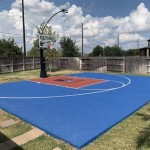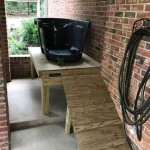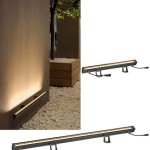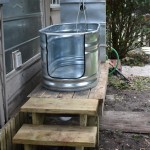DIY Outdoor Cat Shelter for Multiple Cats
Providing adequate shelter for outdoor cats, particularly during inclement weather, is crucial for their health and well-being. Constructing a DIY outdoor cat shelter designed to accommodate multiple cats offers a cost-effective and customizable solution. This article outlines the steps involved in building a durable and insulated shelter, focusing on key design considerations for multi-cat occupancy.
Before embarking on the construction process, it is essential to evaluate the specific needs of the cats the shelter will serve. Factors to consider include the average temperature in the region, the number of cats that will utilize the shelter, and the potential for predators. A well-planned shelter will offer protection from rain, snow, wind, and extreme temperatures, while also providing a safe and secure environment.
Planning and Material Selection
The initial phase involves determining the appropriate size and layout of the shelter. For multiple cats, a larger shelter with multiple entrances and exits is recommended. A minimum internal area of 36 inches by 24 inches is suggested for accommodating two to three cats comfortably. The height should be sufficient for the cats to stand and turn around without difficulty, typically around 18 inches.
Material selection is paramount for durability and insulation. Plywood is a suitable choice for the exterior walls and roof due to its strength and resistance to water damage when properly treated. Pressure-treated lumber can be used for the base to prevent rot and decay. For insulation, rigid foam insulation boards are highly effective, offering excellent thermal resistance and ease of installation. Straw, rather than hay, is a preferred bedding material as it repels moisture and provides superior insulation compared to blankets or towels, which can become damp and freeze.
Tools required for the construction include a saw (circular saw or hand saw), drill with various drill bits, measuring tape, pencil, hammer, screwdriver, utility knife, and safety glasses. It is important to exercise caution when using power tools and to wear appropriate safety gear.
Construction Steps
The construction process can be broken down into several key steps, beginning with the base construction. The dimensions of the base should match the planned dimensions of the shelter's floor. Cut the pressure-treated lumber to the desired lengths and assemble a rectangular frame using screws or nails. Ensure the frame is square and level for a stable foundation.
Next, cut the plywood for the floor, walls, and roof to the appropriate dimensions. For the walls, consider incorporating a slight angle to the roof for बेहतर water runoff. Attach the floor to the base frame using screws. Then, attach the walls to the floor, ensuring they are securely fastened and create a solid enclosure. Pre-drilling pilot holes can prevent the wood from splitting.
The roof can be constructed separately and then attached to the walls. Consider creating a slight overhang to protect the entrances from rain and snow. Use hinges to create a hinged roof for easy access to the interior for cleaning and maintenance. Secure the roof with latches or hooks to prevent it from being blown open by strong winds.
Insulation is a critical component of the shelter. Cut the rigid foam insulation boards to fit inside the walls and roof. Adhere the insulation boards to the plywood using construction adhesive. Ensure a tight fit to minimize air gaps. For added insulation, consider layering the insulation boards.
Entrance and exit points should be strategically placed to minimize wind exposure while allowing easy access for the cats. Two entrances are generally recommended for multiple cats, providing alternative escape routes if needed. The entrances should be approximately 6-7 inches in diameter to allow cats to pass through comfortably while deterring larger animals from entering. Cut circular holes in the walls using a hole saw or jigsaw. Consider attaching flexible flaps made of heavy-duty plastic or canvas to the entrances to further reduce wind and rain penetration. These flaps should be lightweight enough for the cats to easily push through.
Once the structure is assembled and insulated, apply a weatherproof sealant to all seams and joints to prevent water from entering. Paint or stain the exterior of the shelter with a non-toxic, weather-resistant paint or stain to protect the wood from the elements and extend its lifespan. Allow the paint or stain to dry completely before placing the shelter outdoors.
Placement and Maintenance
The placement of the outdoor cat shelter is crucial for its effectiveness. Choose a location that is sheltered from the wind and rain, ideally against a building or fence. Elevate the shelter slightly off the ground by placing it on bricks or concrete blocks to prevent water from pooling underneath. Ensure the area around the shelter is free from debris and potential hazards.
Regular maintenance is essential for keeping the shelter clean and functional. Clean the interior of the shelter regularly, removing any soiled bedding and replacing it with fresh straw. Inspect the shelter for any signs of damage, such as cracks or leaks, and make necessary repairs promptly. Reapply sealant or paint as needed to maintain the weatherproofing. Monitor the shelter for signs of pests, such as fleas or mites, and take appropriate measures to control them.
Consider adding amenities to enhance the comfort of the shelter. A scratching post placed near the entrance can encourage cats to use it and help maintain their claws. Providing a food and water bowl inside the shelter can encourage cats to utilize it, especially during harsh weather. However, be mindful of potential attractants for unwanted wildlife and clean up any spilled food promptly. Heated pads specifically designed for outdoor use can offer additional warmth during the coldest months. These pads are typically low-voltage and safe for use in outdoor environments.
Advanced Design Considerations
For regions with particularly harsh winters, additional insulation measures may be necessary. Consider adding a layer of bubble wrap or reflective foil insulation between the rigid foam insulation and the plywood. This can further reduce heat loss and improve the shelter's thermal performance. A double-walled construction, with an air gap between the inner and outer walls, can also provide enhanced insulation.
In areas with heavy snowfall, a raised roof design can help prevent snow accumulation and reduce the risk of roof collapse. A steeply pitched roof will allow snow to slide off easily. Alternatively, reinforce the roof structure with additional supports to withstand the weight of heavy snow loads.
To deter predators, consider incorporating features such as a covered entrance or a tunnel leading to the interior of the shelter. This can provide cats with a greater sense of security and make it more difficult for predators to access the shelter. Motion-activated lights can also help to deter predators and provide additional visibility around the shelter at night.
Alternative Materials and Designs
While plywood is a common choice for constructing outdoor cat shelters, alternative materials can also be used. Plastic storage containers can be repurposed into shelters, offering a durable and weatherproof option. These containers are readily available, easy to clean, and can be insulated with foam boards or straw. However, ensure the container is appropriately sized for multiple cats and provides adequate ventilation.
Another alternative is to use straw bales to create a shelter. Stack the straw bales in a square or rectangular shape, leaving an opening for the entrance. Line the interior with plastic sheeting to prevent moisture from seeping in and fill it with straw for insulation. Straw bale shelters are relatively inexpensive to construct and provide excellent insulation, but they may require more maintenance to prevent them from deteriorating.
For a more aesthetically pleasing option, consider building a shelter that resembles a miniature house. This can be constructed using wood or composite materials and can be customized to match the style of your home or garden. However, ensure the design incorporates all the essential features of a cat shelter, such as insulation, weatherproofing, and multiple entrances.
Modifying existing structures, such as dog houses or sheds, can also provide a suitable shelter for outdoor cats. Ensure the structure is properly insulated and weatherproofed and that it provides a safe and secure environment for the cats.

Heated Pet Houses Multiple Cats Luxury Lounging Hideout For One Or Outdoor Cat House Diy

15 Diy Outdoor Cat House Plans For Feline Shelter

10 Awesome Outdoor Cat House Ideas For Feral Felines

Using A Shed As An Outdoor Cat Shelter For Multiple Cats Winter

Outdoor Cat Shelter House Diy Feral

Pin By Kristie Dorman On Cats Feral Cat Shelter House Diy

10 Awesome Outdoor Cat House Ideas For Feral Felines

Guy Builds Cats Coolest Outdoor Play Space Ever The Dodo

Outdoor Cat House Outside Heated Shelter For Cold Weather

Com Outdoor Cat Enclosure Today S Deals Pet Supplies Feral House Shelter








